Carl E. Olson's Blog, page 39
July 16, 2015
What’s Changed? Comparing Pre- and Post-Vatican Hymns

Mystic Lamb (detail, angels), by Jan van Eyck (c. 1390-1441).
What’s Changed? | J. E. Sigler | Homiletic & Pastoral Review
A Comparison of Self- and Divine-Referential Pronoun Usage in Hymns Written Pre- and Post-Vatican II
“He that sings praise, not only sings, but also loves him of whom he sings.”—St. Augustine
Some HPR readers may be unaware that people have been arguing about the language of Church hymns since at least the 18th century. Dovring describes one side to a mid-18th-century Swedish Protestant hymnal controversy, as arguing that “the whole dispute (surrounding the new hymnal) was, essentially, not about doctrine, but simply about the manner of presentation,” whereas the other side insisted that “the public was not aware that they were being exposed to a new way of thinking because of the familiarity of the words and phrases (being) used”(pp. 391–392).1 To Catholics active on the music front of the post-conciliar “liturgy wars,”2 these 250-year-old Swedish battle cries probably sound pretty familiar.
They are certainly familiar to me. As both a faithful Catholic and a doctoral student in communication, I pay close attention to communication within the Church. In fact, all my previous research has centered on Church communication. So, even before Brummond’s March 2015 HPR article on the “Sanctus,” I was planning to study the Council’s effect on Church music. But Brummond’s article summed up my inspiration for the study exceptionally well:
Certainly we can point to tendencies in the postconciliar Church toward a more anthropocentric liturgy. Consider the popular hymn, “Anthem,” as an example of this trend:
We are called, we are chosen.
We are Christ for one another.
We are promised to tomorrow,
(W)hile we are for him today.
We are sign, we are wonder.
We are sower, we are seed.
We are harvest, we are hunger.
We are question, we are creed.
That’s 13 uses of the pronoun “we,”just in the chorus. The focus on the community is primary. That’s a far cry from the angelic cry of the “Sanctus,” which is wholly focused on God. 3
As a convert to the Faith from Orthodox Judaism—where hymns aren’t exactly central to worship—I had felt a weird disconnect in the hymns I’d been singing at Mass for the last three years. Some of them seemed really centered on God; others, not so much. I had worked in publishing before returning to grad school, so I started paying attention to those “publisher’s notes” in the footer of every hymn, which most people just ignore. Very quickly, I began to be able to predict what I’d see there: specifically, when a hymn was written. I couldn’t predict the precise year, or even decade, but about 98 percent of the time, I could predict whether it was a pre- or post-conciliar hymn. So I determined to study this difference more methodically, and to do it as simply and neatly as possible: using pronouns.
Together with a non-Catholic colleague, Max Renner, I selected two hymnals: one more “traditional” (the 2015 Ignatius Pew Missal), and one more “modern” (the 2015 Breaking Bread pew missal).
July 14, 2015
Monument, Idols, and Tolerance
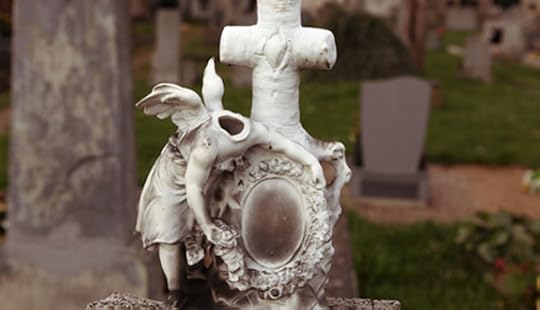
Destroyed tombstone at the abandoned cemetery. (us.fotolia.com | Vladimir Wrangel)
Monument, Idols, and Tolerance | Fr. James V. Schall, SJ | CWR
What we have now is rapidly changing because we do not really look at or understand the philosophies of the real iconoclasts of our time
“Destroy this temple, and in three days I will raise it up again” (Jn 2:19).
I.
One of the accusations made against Christ was that he threatened to destroy the Temple of Jerusalem. When King David planned to build the original Temple, Yahweh’s initial reaction was: “Who told you that I wanted a house of cedar?” (1 Chron 17; 2 Sam 7). But the final Temple was destroyed by the Romans under Vespasian in 70 A.D., mainly to get rid of the troublesome Jews. The Triumphal Arc of Titus in the Roman Forum shows a Jewish Temple menorah. Temples are erected, worshipped in, and often destroyed. They stand for something, both in their construction and in their destruction. They can themselves be houses of God built in cedar or stone. They can even analogously become what they symbolize. “The Temple is the Temple of His Body” (Jn 2:21). But temples can also be places dedicated to many different kinds of gods and ideologies, not always so edifying.
An idol is some figure or humanly made artifact that is to be worshiped as a god, usually under threat of punishment or death for refusing to do so. It figuratively embodies what it stands for. It is also possible to conceive of such natural objects as the sun, the moon, a mountain, or a river as an idol requiring mandatory worship and sacrifice.
A monument is rather a humanly made statue or object designed to honor some person, country, athlete, purpose, virtue, or even a racehorse. It is specifically not divine or a god. A tombstone is a small (usually stone) memorial of the life or a person or persons. Such too are statues in Catholic churches. These artifacts may be sublime, ordinary, or even ugly. They are intended, however, to capture something of their maker’s purpose, in the name of a religion or polity. They are usually viewed that way by those who behold them.
But someone from outside such a culture, country, or religion may confuse veneration or honoring with worship. Christians accused of “worshipping Mary” is a case in point. The distinction between “to worship” and “to venerate” is thus significant theologically as an indication of what is going on. But if someone insists that veneration must be worship, he will accuse the devotion to Mary as “worship” instead of the “veneration” it is.
The Old Testament frequently witnesses to the destruction of idols of other nations.
July 12, 2015
"The Lord took me...": A deep and abiding Biblical theme

"The Prophet Amos" by Gustave Dore (1832-83) [WikiArt.org]
A Scriptural Reflection on the Readings for Sunday, July 12, 2015 | Carl E. Olson
Readings:
• Am 7:12-15
• Psa 85:9-10, 11-12, 13-14
• Eph 1:3-14
• Mk 6:7-13
“The shepherd’s career is one of solitude,” stated Monsignor Ronald Knox in one of his homilies, further noting that such solitude “is the seed-ground of revelation; the call came to Moses like that, came to Amos, ‘I was but tending sheep when the Lord took me into his service’…”
Little is known about Amos; today’s reading from his book is the only biographical information he put to paper (Amos 7:10-17). It reveals he was indeed a herdsman, breeding and raising sheep and, likely, cattle. He did not possess any apparent education, talent, or status setting him apart as an obvious spokesman for God. In fact, when Amos was being chased out of the northern kingdom around the year 750 B.C. by the high priest, Amaziah, he said, “I was no prophet, nor have I belonged to the company of prophets…” But something happened: “The Lord took me from following the flock, and said to me, Go, prophecy to my people Israel.”
“The Lord took me…” Those are four words to ponder, for they express a deep and abiding theme in Scripture. The Apostle Paul, writing to the Christians in Ephesus, situates this divine calling within a cosmic, panoramic vision of salvation history. Disciples of Christ, he wrote, are blessed “with every spiritual blessing in the heavens, as he chose us in him, before the foundation of the world…” The initiative of God and the passivity of man are even further emphasized in Paul’s declaration, “In love he destined us for adoption to himself through Jesus Christ…”
This mystery of predestination has led to many tomes, numerous debates, and countless headaches, in part because it is caught up in the mystery of God and his perfect knowledge. St. Augustine, however, made an essential point in explaining that those predestined to be children of God are so not because they are “holy and immaculate”, but because God chose and predestined them so they might become so. He also issued this stern warning: “So long as this mortal life endures, no one of the faithful may presume that he belongs to the number of the predestined.” True faith clings to God, while presumption clings to faith in oneself, a sure recipe for ruin.
In addition to election and adoption, Paul wrote of redemption and revelation. The redemption is by Christ’s blood, through which our sins are forgiven; the revelation is the mystery of God’s will, made known to us through his favor, or grace. Again, each of these four wondrous actions are initiated and performed by God. So, what is our part? What are we to do?
The simple answer is: “Do as God commands.” Amos was told to go and prophesy, and so he did. Paul’s calling was equally direct, if more dramatic, as he was blinded by Christ on the road to Damascus. Those who answer the call, Paul taught, “exist for the praise of [God’s] glory…” Soli Deo Gloria; to God alone be glory!
The astounding fact is that we are invited to live in God’s glory, to be filled with his glorious love. Yet this invitation requires hard work on our part; it demands humility and obedience. The Son demonstrated this humility and obedience in becoming man; he then commissioned the Twelve to share in his work of preaching repentance, healing the sick, and driving out demons. Jesus called the Apostles to follow him by sharing in his sacrifice and poverty, and then to “share in his ministry of compassion and healing” (CCC, 1506). They were, in other words, given the authority to join in Christ’s prophetic work of proclaiming the Kingdom, confronting evil, and addressing sin.
“There is the double tragedy of the prophet;” wrote Knox, “he must speak out, so that he makes men dislike him, and he must be content to believe that he is making no impression whatever.” Fr. Hans Urs von Balthasar put it very well: “Their call is a call to conversion, not to success.”
(This "Opening the Word" column originally appeared in the July 15, 2012 edition of Our Sunday Visitor newspaper.)
July 10, 2015
What makes "Who Designed the Designer?" a special book?
Michael Bradley reviews Michael Augros’s new book Who Designed the Designer? A Rediscovered Path to God’s Existence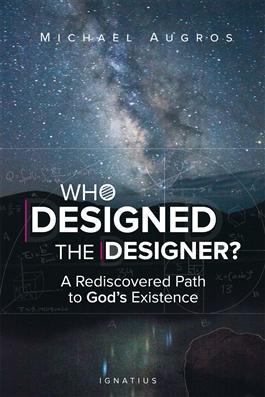 (Ignatius, 2015) and emphasizes its unique strengths in responding to the new atheism:
(Ignatius, 2015) and emphasizes its unique strengths in responding to the new atheism:
What makes Who Designed the Designer? special?
Augros takes aim at new atheism and its horses, including one of its revered ancestors, Bertrand Russell, and in so doing synthesizes his argument’s philosophical potency with strong responses to the new atheists’ cultural and aesthetic arguments as well, and so responds to an uncommonly broad array of objections. This innovative combination makes the book essential reading for contemporary people of faith interested in religious philosophy and the relationship between faith and culture.
The book is also highly accessible. Augros writes clearly and for the non-philosopher. He compiles in an appendix every single argument he makes in the book, in its deductive form, stripped of anecdotes and examples, providing an excellent summary.
Who Designed the Designer? is important and rewarding reading for honest participants in society’s shrill discussion of belief and atheism, and science and metaphysics. Accessible and enjoyable yet rigorous, manageable (244 pages) yet challenging, it has the potential to instill fresh confidence in reason’s ability to dethrone new atheism and prove the reality of the divine mind.
Read the entire review on the Ethika Politika website.
July 9, 2015
Divinization, Liturgy, and Evangelization
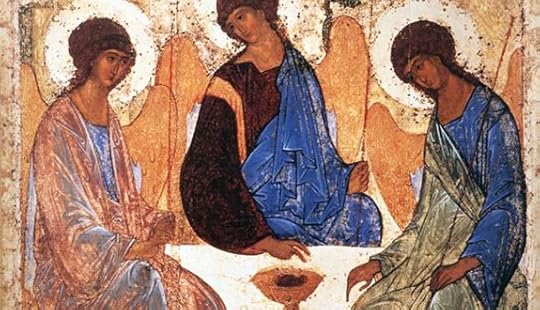
Detail from "Trinity" (Троица) by Andrei Rublev [c. 1410]
Divinization, Liturgy, and Evangelization | Jared Ortiz | CWR
A new volume of essays shows how the proper context for thinking about divinization is the liturgy, for God has chosen the liturgy as the primary locus for communicating his divine life
The goal of the Christian life is to become gods. This claim probably will strike many readers as exaggerated at best and downright heretical at worst. But this is what a Catholic priest or deacon says at every single Mass as he prepares the wine for consecration. “By the mystery of this water and wine,” he prays silently, “may we come to share in the divinity of Christ who humbled himself to share in our humanity.” This prayer suggests that the mingling of water and wine is both a symbol of and vehicle for our sharing in God’s divine life, what the Christian tradition has called divinization or deification or, in Greek, theosis. Simply put, God wants—to borrow a phrase from Augustine—to “turn his worshipers into gods” (City of God, 10.1).
While this claim sounds foreign, it is in fact the traditional teaching about salvation that Catholics, Orthodox, and even Magisterial Protestants have always held in some form. God doesn’t just want to save us from our sins (though this is a necessary first step); he wants to save us for himself, for immersion in his own blessed Triune life of love, for a glorious transfiguration wherein our humanity becomes resplendent with his divinity. And how does God intend to do this? Through the sacraments which communicate his life to us.
The liturgical context
Because this traditional teaching is not widely known, it is with gratitude that we should welcome the small collection of essays, Divinization: Becoming Icons of Christ through the Liturgy, edited by Fr. Andrew Hofer, OP. Fr. Hofer, who teaches on the Pontifical Faculty of the Immaculate Conception at the Dominican House of Studies in Washington, D.C., has gathered a handful of scholars, chosen for their ability to teach the faith in clear and compelling ways, to write on various aspects of divinization and the liturgy.
David Fagerberg discusses how divinization is connected to evangelization; Andrew Swafford delves into some of the Biblical roots of divinization; Fr. Hofer contributes an essay on how Aquinas’ teachings on divinization can help people in the pews; Daria Spezzano articulates why divinization is important for authentic liturgical renewal (this essay alone is worth the price of admission); and Michael Sirilla explores divinization in the New Evangelization. Together, these essays fill a critical gap in popular Catholic and scholarly literature.
Hofer argues that the proper context for thinking about divinization is the liturgy for God has chosen the liturgy as the primary locus for communicating his life to us.
July 8, 2015
Catholics and the Administered Society

(Photo: us.fotolia.com | sibgat)
Catholics and the Administered Society | James Kalb | CWR
In order to maximize control, the social justice/social services state must minimize man. What can be done?
Should Catholics today work, as a matter of conscience, toward ever broader bureaucratic responsibility for human well-being in general?
That result seems to follow from current ways of thinking. “Love thy neighbor” implies an ethic of mutual assistance. The democratic view that we act through government, together with the industrial approach to getting things done reliably, which is now thought simply rational, seem to imply the social services state as a necessary consequence.
The point is confirmed by the language of rights that the Church has now adopted: everyone has a right to food, shelter, medical care, employment, and many other things. “Rights” normally mean enforceable individual entitlements. If other institutions don’t deliver, government should step in and make sure what’s needed gets done; otherwise, it’ll be denying basic human rights. So welfare rights recognized by the Church seem to obligate government to guarantee everyone a materially decent standard of living regardless of circumstances.
And then there is the notion of solidarity, which makes everyone our neighbor, and seems to call for an arrangement through which each looks after all. It is also confirmed by considerations of justice and mercy. Some people have practical problems, with no one to help them, through no fault of their own. Others are at fault, but the consequences seem disproportionate, especially when compared with other people who do worse without similar problems. And even when the faults seem great, who knows what really happened or what we would have done in their place?
Above all, Christ emphasized forgiveness and mercy, and tells us not to judge. So it seems the social order should be set up to minimize the results of bad luck and even bad conduct in all cases. Given current ways of thinking and doing things, that means that an ever more comprehensive and global welfare state is part of any minimally adequate response to human misfortune and failure.
Nor should Christians be content with the minimum. Love and mercy know no limits. So in the name of ever greater solidarity, it seems that government should work to overcome every human distinction people may feel as a disadvantage. To avoid invidious distinctions between welfare dependency and self-support, for example, it seems that government should, as a matter of equal citizenship, provide as many basic goods and services as possible gratis to all.
On such a view the Christian social ideal turns out to be a sort of politically correct egalitarian collectivism, a society in which everyone equally supports everyone and no invidious distinctions are permissible or even possible.
Nonetheless, such a result radically opposes the Catholic doctrine of subsidiarity. As the Catechism says:
July 6, 2015
Discover the biblical roots of the Eucharist in a dynamic new series from the Augustine Institute
The Passover Lamb. The Manna from Heaven. The mysterious Bread of the Presence. At the Last Supper, Jesus said “This is my Body” and “This is my Blood.” Some say they’re merely symbols of remembrance. Others say they’re really the Body and Blood of Christ, but can’t explain how that’s possible. The Eucharist is the center-point of the Mass – but where is it the Bible?
The answers are here, in the latest series from the Augustine Institute, LECTIO: EUCHARIST: DISCOVERING THE MASS IN THE BIBLE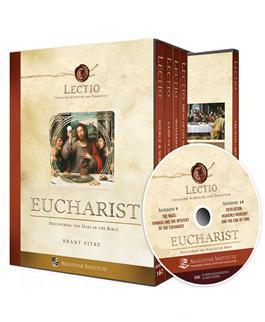 . Renowned teacher Dr. Brant Pitre guides us through Scripture and Church teaching to illuminate the wonder and miracle of the Eucharist. With deep insight, Dr. Pitre gives a fresh and thoroughly biblical perspective for understanding the mystery that is the Eucharist. A comprehensive Bible study on the Eucharist, this new video series takes you step-by step through the Old and New Testaments, beginning with the Garden of Eden in the book of Genesis and ending with the Wedding Supper of the Lamb in the book of Revelation.
. Renowned teacher Dr. Brant Pitre guides us through Scripture and Church teaching to illuminate the wonder and miracle of the Eucharist. With deep insight, Dr. Pitre gives a fresh and thoroughly biblical perspective for understanding the mystery that is the Eucharist. A comprehensive Bible study on the Eucharist, this new video series takes you step-by step through the Old and New Testaments, beginning with the Garden of Eden in the book of Genesis and ending with the Wedding Supper of the Lamb in the book of Revelation.
The sessions in the Lectio: Eucharist series are:
Session 1: Source and Summit: Introducing the Eucharist – What exactly is the Eucharist? What do the various names of the Eucharist reveal? And why does the Church teach that it is the “Source and Summit” of the Christian life?
Session 2: In the Beginning: Garden of Eden and the Tree of Life – What does the Garden of Eden have to do with the Sacrament we experience today? Is the Eucharist prefigured from the very beginning of the Bible?
Session 3: Lamb of God: The Sacrifice of Isaac and the Passover Lamb – Why does God ask Abraham to Sacrifice Isaac? And how does this mystery point forward to the death of Jesus on Calvary and the sacrifice of the Mass?
Session 4: Miracles of Exodus: Manna and Water – Are the wonders of the Exodus just miracles? Or are they signs pointing to the great miracle Jesus will accomplish in the Eucharist?
Session 5: Mysteries of the Tabernacle: The Bread of the Presence – What is the meaning of the mysterious “Bread of the Presence” that was kept in the Tabernacle of Moses? And what does it reveal about Jesus’ presence in the Eucharist?
Session 6: Miracles of Jesus: Water, Wine, Loaves, and Fishes – The miracles of Jesus weren’t just displays of divine power. They were also meant to prefigure what he would ultimately accomplish in the Upper Room.
Session 7: Bread of Life Discourse: John 6 and the Real Presence – In the Gospel of John, chapter 6, Jesus makes a startling statement about his own flesh and blood. What did it mean to the listeners of His time – and to us now as we approach the Eucharist?
Session 8: The Last Supper and the Cross: The New Passover of Christ – What was Passover like at the time of Jesus? A closer look at how first century Jews celebrated the Passover reveals more than we might expect about the Last Supper.
Session 9: The Mass: Emmaus and the Mystery of the Eucharist – Why does Jesus disappear after he breaks the bread on the Road to Emmaus? And how did the early Church understood Jesus’ words “Do this in memory of Me”?
Session 10: Revelation: Heavenly Worship and the End of Time – What is worship like in heaven? And what can the book of Revelation teach us about our liturgy and worship on earth?
Ideal for small group or home use, the Lectio: Eucharist series includes 5 DVDs with over 7 hours of video presentation. A Personal Study Guide with extensive devotional help and a Leader’s Study Guide can be added to make the group experience dynamic and penetrating.
Dr. Brant Pitre says, “If you look for the word ‘Mass’ in the Bible, you won’t find it anywhere. But if you start in the Garden of Eden and walk step-by-step to the book of Revelation, you will discover that the reality of the Eucharist is everywhere in Scripture. It is prefigured in the Old Testament and fulfilled in the New, because the Eucharist is indeed the source and summit of the Christian life.”
About the Host:
Dr. Brant Pitre is Professor of Sacred Scripture at Notre Dame Seminary in New Orleans, Louisiana. He earned his Ph.D. in Theology from the University of Notre Dame, where he specialized the study of the New Testament and ancient Judaism. He is the author of several books, as well as an extremely enthusiastic and engaging speaker. He has produced dozens of Bible studies on CD, DVD, and MP3, in which he explores the biblical foundations of Catholic faith and theology. He currently lives in Louisiana, with his wife Elizabeth, and their five children. is available for interviews about this series.
Dr. Brant Pitre, the host of the Lectio: Eucharist series, is available for interviews.
To view a sample episode or request an interview with Dr. Brant Pitre, please contact: Rose Trabbic, Publicist, Ignatius Press at (239) 867-4180 or rose@ignatius.com
July 4, 2015
The Scandalizing, Thankless Job of Prophets

"The Prophet Ezekiel" (1610) by Michelangelo [WikiArt.org]
A Scriptural Reflection on the Readings for Sunday, July 5, 2015 | Carl E. Olson
Readings:
• Ez 2:2-5
• Psa 123:1-2, 2, 3-4
• 2 Cor 12:7-10
• Mk 6:1-6
We’ve all heard of “thankless jobs.” Consider the following job description: “Requires spending endless hours with people who dislike, dismiss, or reject you completely. Must be able to defend a product that few want and many hate. No vacations; few apparent benefits. Poor pay. Chances of bodily harm, torture and death very high.”
Anyone interested?
That thankless job was the job of the prophets — men such as Jeremiah, Amos and Ezekiel. And, of course, Jesus Christ.
The pattern in the Old Testament is quite consistent. A man was called by God to proclaim a message of warning, exhortation and potential judgment to a people who were, with few exceptions, very stubborn, disagreeable and even violent. The prophet was to declare the name and word of the Lord God so the “rebels who have rebelled” would not be able to say, “We weren’t warned! We weren’t given a chance!”
The prophets were self-sacrificing messengers of God’s love. They were the righteous ones who would have understood well the cry of the Psalmist: “Have pity on us, O Lord, have pity on us, for we are more than sated with contempt; our souls are more than sated with the mockery of the arrogant, with the contempt of the proud.” The essential problem and core sin was that of pride, that self-love which can think only of itself at the expense of everything else, but especially God.
In Mark 5, Jesus encountered faith and humility in the hemorrhaging woman who touched his hem (Mk 5:25-34) and the ruler of the synagogue whose daughter had died (Mk 5:35- 43). But when he returned to Nazareth, “his own country” (Mk 6:1), the people who knew him as a youth refused to consider the validity of his powerful teaching and miraculous acts of healing. We see how the rebellious nature of pride is often masked by attacking the truth and truth-bearer. Their astonishment was not one of genuine marveling, but of sullen dislike. Their questions were not honest, but dismissive: “Where did this man get all this? What kind of wisdom has been given him? What mighty deeds are wrought by his hands!”
They were offended, in part, because their selfish notions of the Messiah were threatened by the lowly, “ordinary” Jesus, a mere carpenter and son of Mary. They seem to have forgotten the greatest King of Israel was also a nondescript lad with a modest upbringing (1 Sam 25:10). Rather than even consider the evidence or ponder the miraculous, they “took offense at him.” That is the attitude and approach of skeptics and “free thinkers” and atheists today, who angrily declare, “Miracles are impossible!” or “Jesus was not divine!”
The word for “offense” is skandalizō; they were scandalized by the words, actions, and person of Jesus. Not being able to make sense of him, they sought to be rid of him for good. The signs performed by Jesus attest to his divinity. “They invite belief in him,” states the Catechism of the Catholic Church. “To those who turn to him in faith, he grants what they ask. So miracles strengthen faith in the One who does his Father’s works; they bear witness that he is the Son of God” (No. 548).
The prophet without honor in his own house did not force his miracles on the people — he moved on to other villages, pursuing the thankless job of loving mankind.
(This "Opening the Word' column originally appeared in the July 8, 2012, edition of Our Sunday Visitor newspaper.)
July 3, 2015
The Excess Of Divine Love
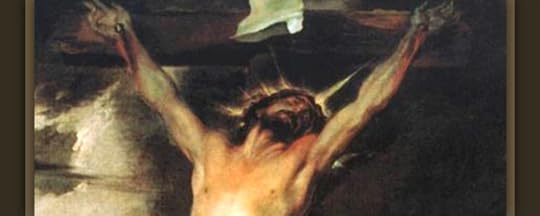
Crucifixion, by Anthony van Dyck (1622).
The Excess Of Divine Love | Brent Withers | HPR
The distance between our humanity and the divinity of God is so incomprehensible that to begin to try and imagine this distance through the eyes of faith, is to catch a glimpse of the unfathomable power of God, and immensity of his love for us. His love for us is expressed in his divine plan where: “Before the world was made, he chose us, chose us in Christ, to be holy and spotless, and to live through love in his presence, determining that we should become his adopted sons, through Jesus Christ” ( Eph 1:4-5). To be holy and spotless in eternal love in the presence of God is to enjoy his beatific vision in all its splendor and grandeur. Again, this vision is as incomprehensible as grasping the distance between human and divine nature. The power of the Divinity in accomplishing our redemption is explained by God the Father to St. Catherine of Siena.
This is why I gave the Word, my only begotten Son. The clay of humankind was spoiled by the sin of the first man, Adam, and so all of you, as vessels made from the clay, were spoiled and unfit to hold eternal life. So, to undo the corruption and death of humankind, and to bring you back to the grace you had lost through sin, I, exaltedness, united myself with the baseness of your humanity. For my divine justice demanded suffering in atonement for sin. But I cannot suffer. And you, being only human, cannot make adequate atonement. Even if you did atone for some particular thing, you still could make atonement only for yourself, and not for others. But, for this sin you could not make full atonement, either for yourself or for others, since it was committed against me, and I am infinite Goodness. Yet, I really wanted to restore you, incapable as you were of making atonement for yourself. And because you were so utterly handicapped, I sent the Word, my Son; I clothed him with the same nature as yours—the spoiled clay of Adam—so that he could suffer in that same nature which had sinned, and by suffering in his body, even to the extent of the shameful death of the cross, he would placate my anger.1
The mystery of the incarnation embodies the depth of God’s excessive generosity and gratuitousness in stooping to become one with our human nature, so that we can become exalted and share in his inner life through grace. Through the first sin of Adam, we “were spoiled and unfit to hold eternal life.” The original sin of Adam could only be repaired and atoned for by the new Adam: Jesus Christ. In his exaltedness, he clothed himself in the “baseness of our humanity.”
Left on our own, we are “so utterly handicapped” and unable to save ourselves and, therefore, attain eternal life. On our own, we “cannot make adequate atonement” for sin. A sin committed against God carries an infinite offense because, in his divine nature, he is “infinite goodness.”
Continue reading at www.HPRweb.com.
July 2, 2015
The Surprising Riches of the Ragpicker

Servant of God Satoko Kitahara (Photo: Ann Maria Clara/Wikimedia Commons)
The Surprising Riches of the Ragpicker | K.V. Turley | CWR Book Review
Fr. Paul Glynn's The Smile of a Ragpicker: The Life of Satoko Kitahara is an excellent biography of a figure deserving to be better known in the West
Hagiography is oft not well served. In the case of Satoko Kitahara, however, she has been served perfectly by Paul Glynn, the author of The Smile of a Ragpicker: The Life of Satoko Kitahara—Convert and Servant of the Slums of Tokyo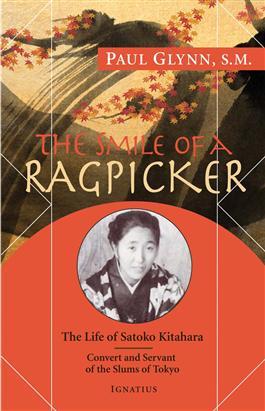 , recently published by Ignatius Press.
, recently published by Ignatius Press.
I suspect that most non-Japanese, such as myself, have heard little or nothing of the subject of this book. I also suspect they shall be as impressed as I am by the story it tells, and also as glad to be acquainted with the life so presented. And, given Pope Francis’ concerns for the poor and the marginalized, this biography and its message could not have come at a more apt time.
So, who was she? Satoko Kitahara was born August 22, 1929; hers was to be a conventional, middle class upbringing, stable and secure in its place in Japanese society and the wider world. Nevertheless, during her first years the nation was becoming the major power in Asia. Soon, however, it moved from national security to international instability as it propagated invasion and war as well as the war crimes that were hidden from the wider Japanese populace until after the war.
In fact, the book wisely starts not with recounting any idyllic childhood but by plunging the reader into the last desperate days of Japan’s fight against the Allies. One is left with a sense of communal madness: school girls brought to airstrips to bow at suicidal Kamikaze pilots while boys not much older than the girls bowing took off to fly planes carrying explosives straight into American ships.
As Japan began to lose the war there was a collective loss of any sense of balance. All was thrown into the last gasps of total war, with the Japanese code of honor refusing defeat, never mind surrender. It was a recipe for disaster, which was visited upon that nation on August 6, 1945, when a US bomber plane Enola Gay, set off from an airfield at Tinian with a payload that had until then been unimaginable, with consequences no nightmare could have prepared the citizens of Hiroshima for. When that city, and later Nagasaki (Japan’s most Catholic of cities), experienced something beyond any known human experience, the voice of the Emperor was heard for the first time on crackling wireless sets saying what just days before would have been unthinkable—Japan had surrendered.
Any biography of Kitahara could only make sense when placed fully in the context of these events and the mindset of the nation she came from at that particular stage of its history.
Carl E. Olson's Blog
- Carl E. Olson's profile
- 20 followers



